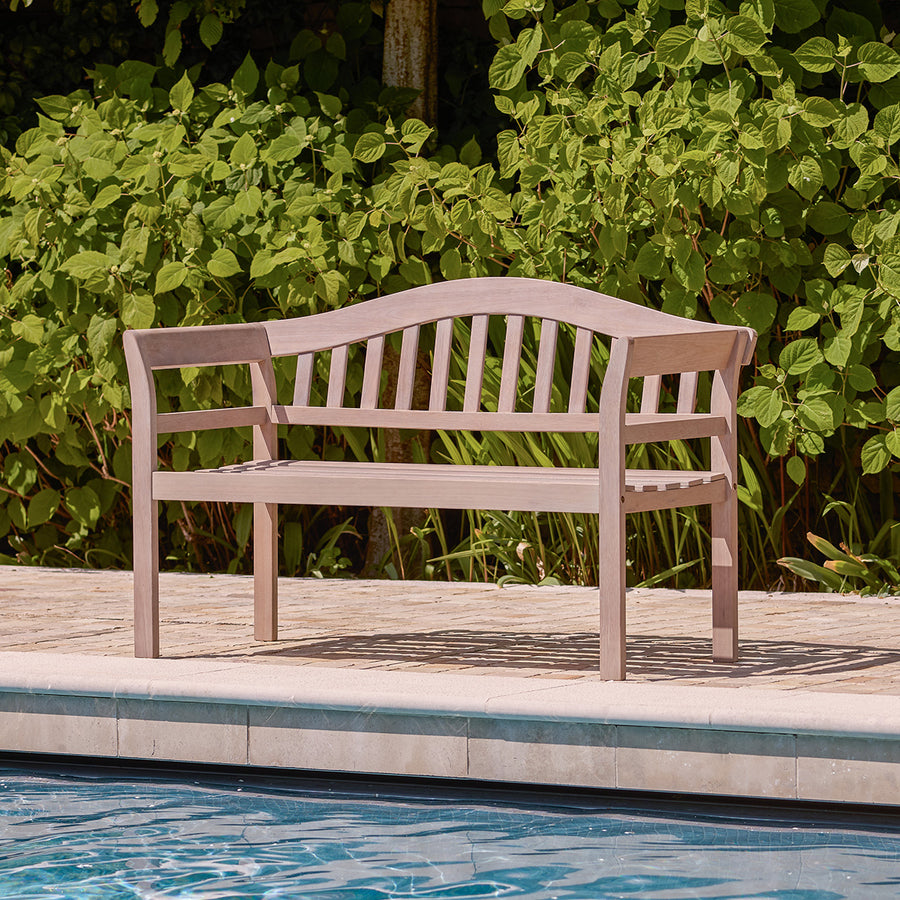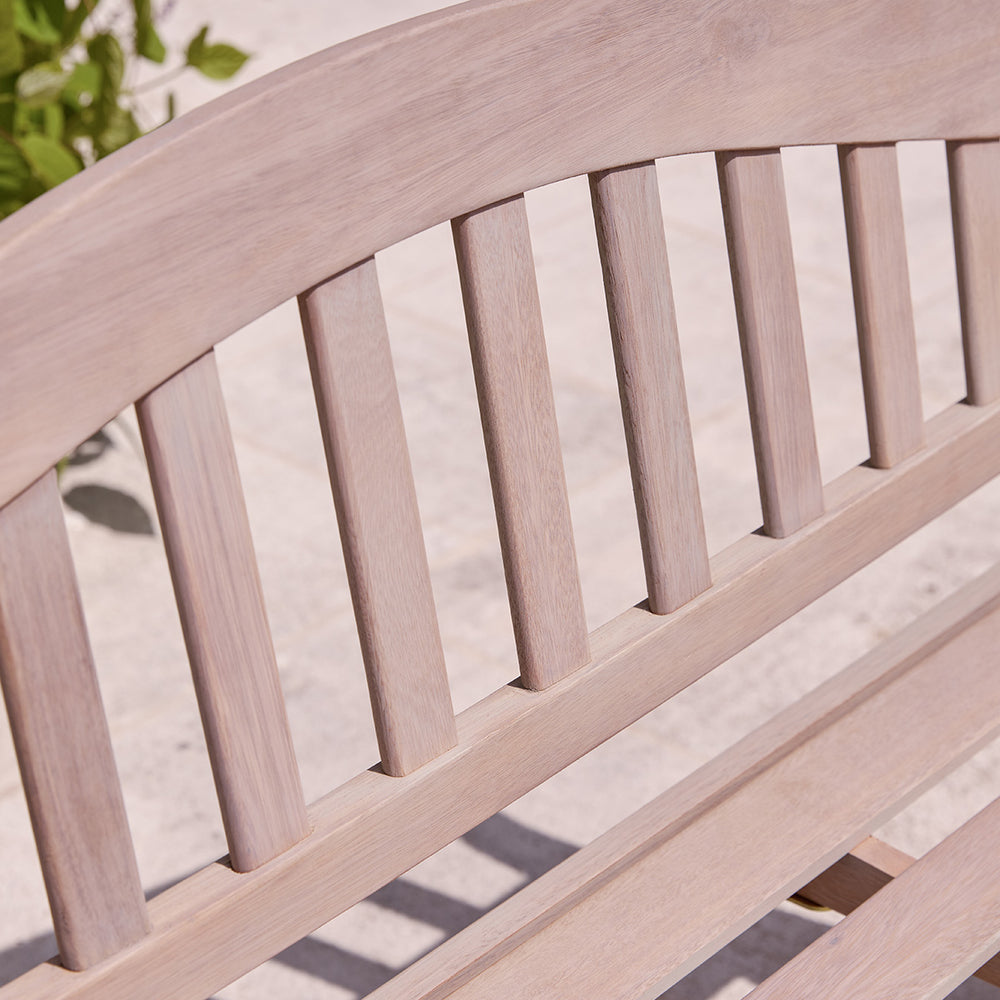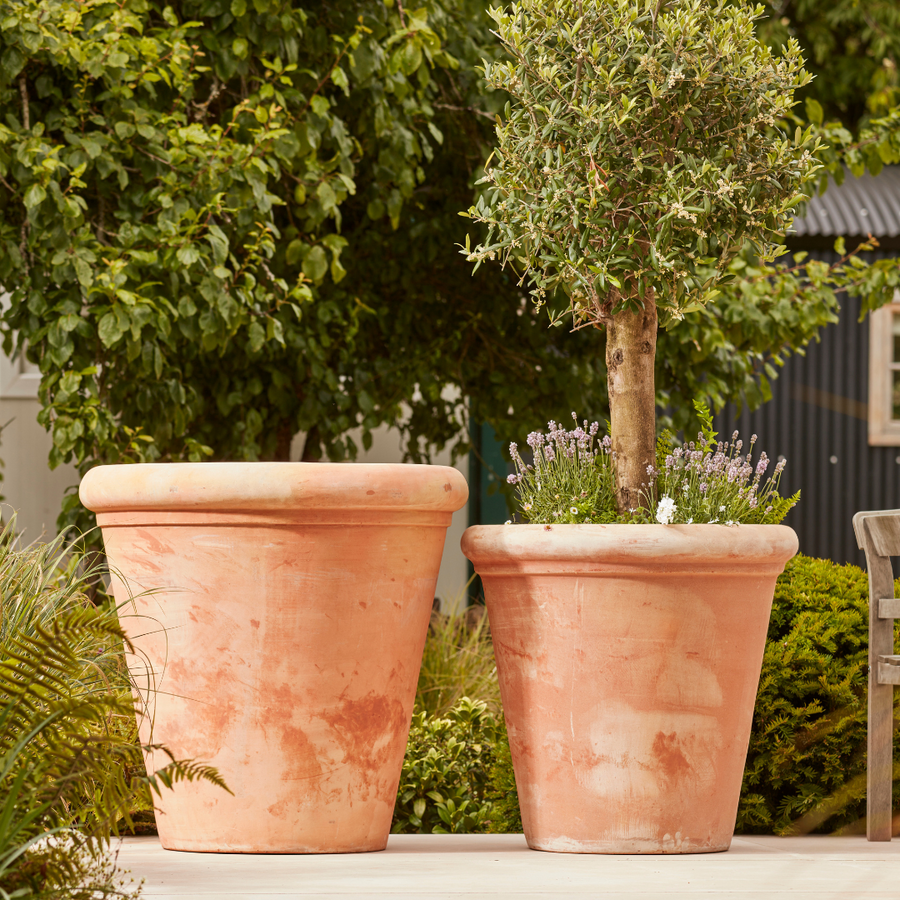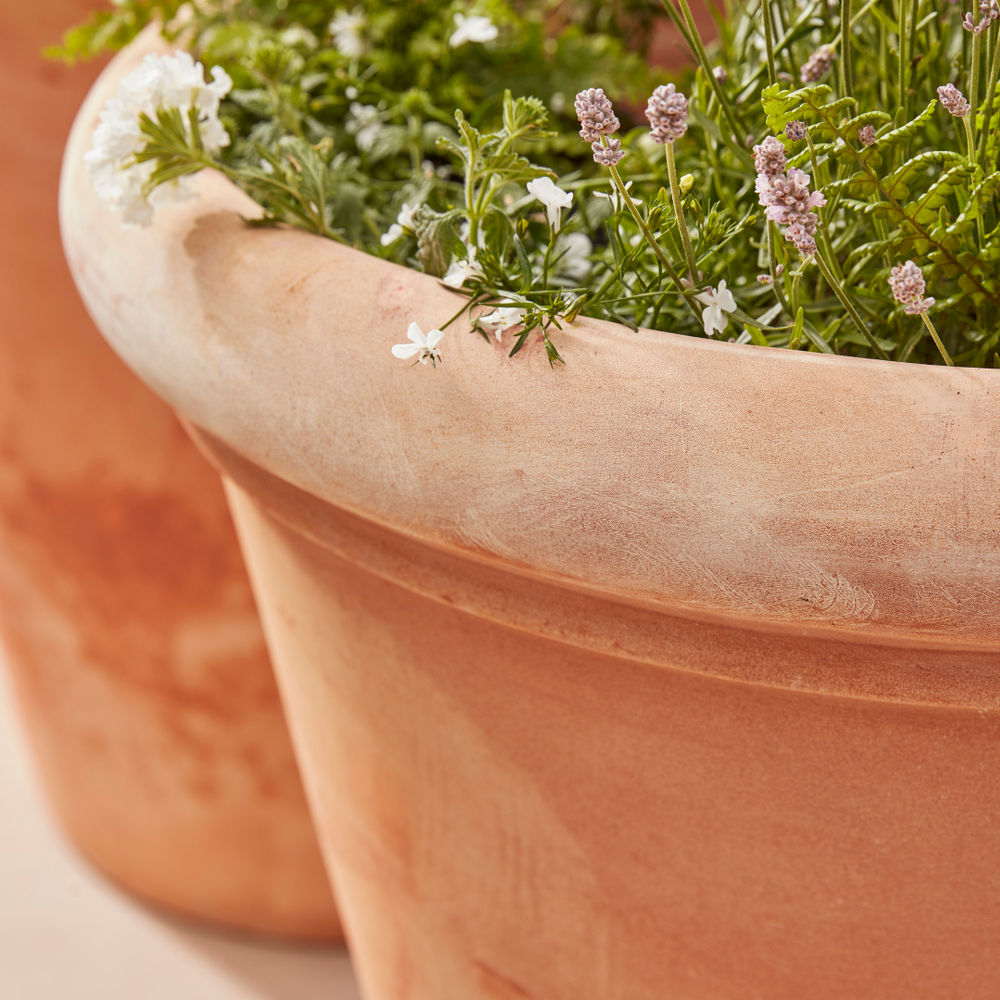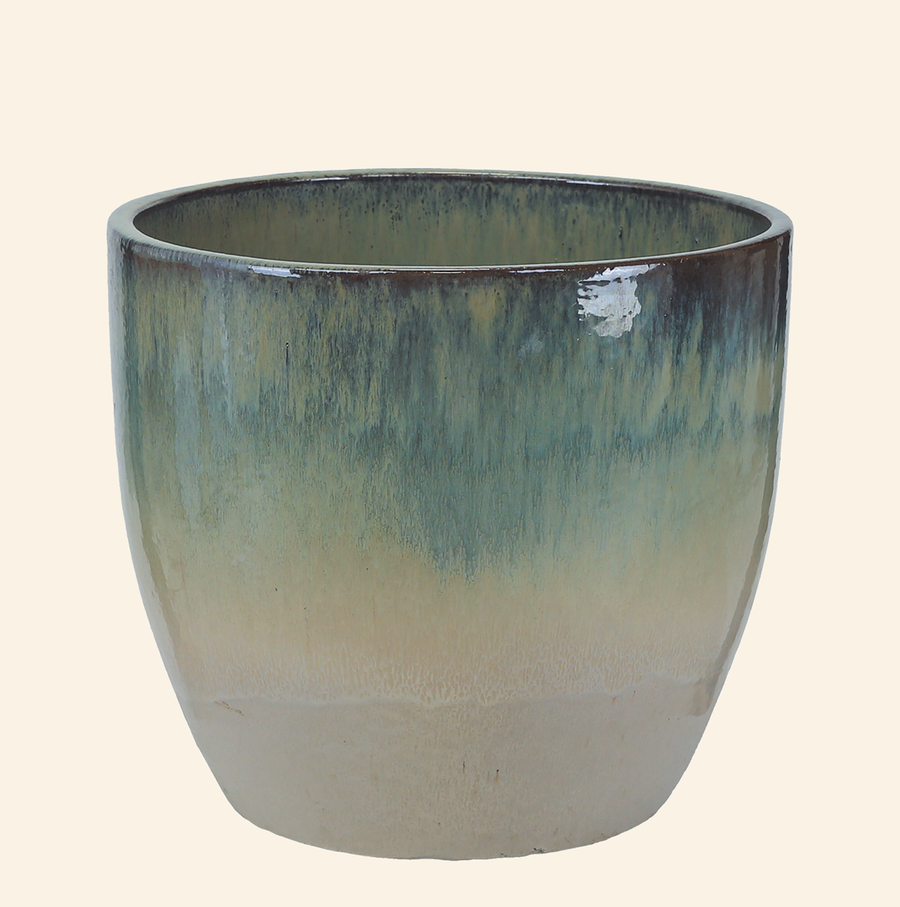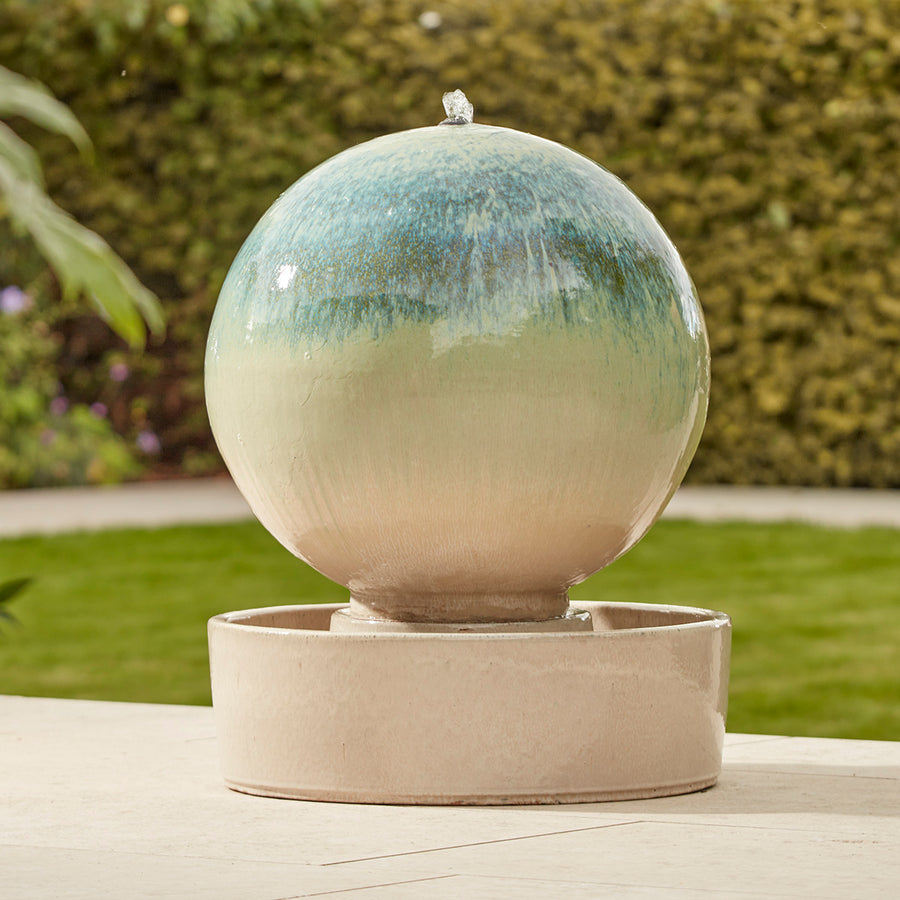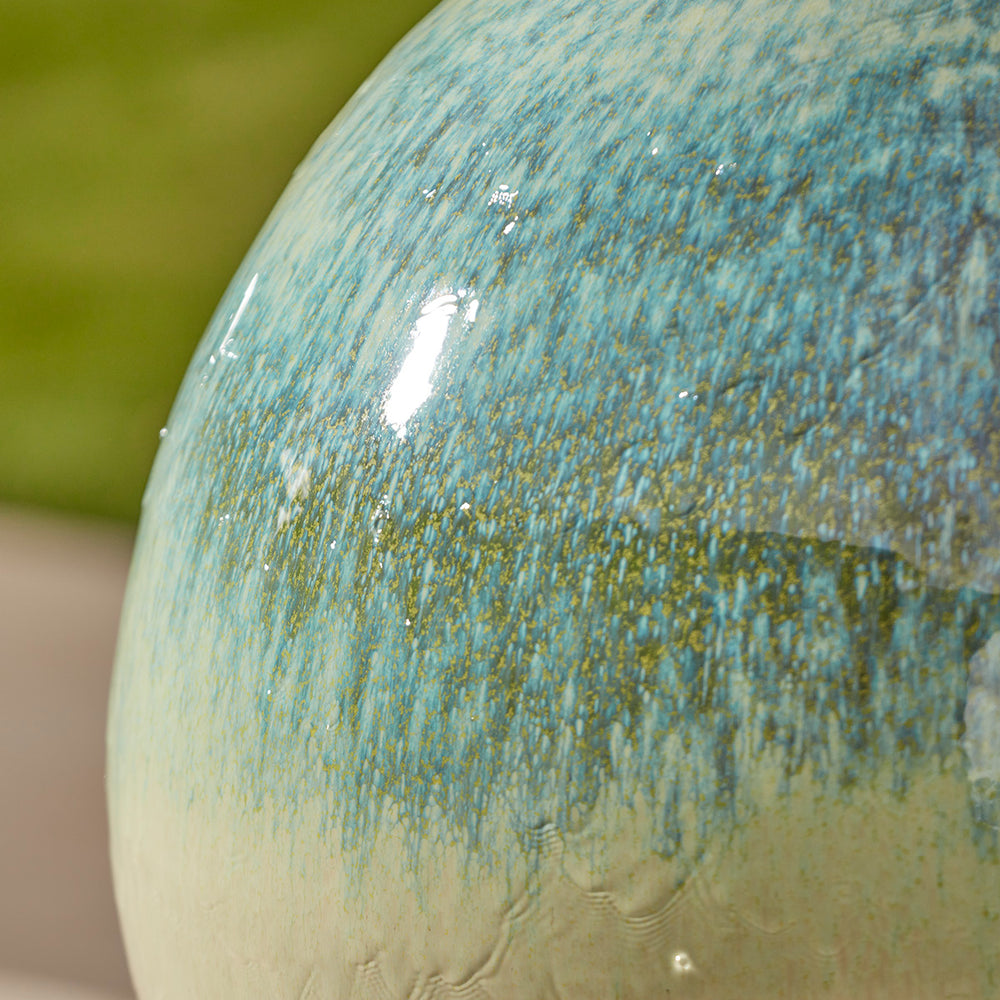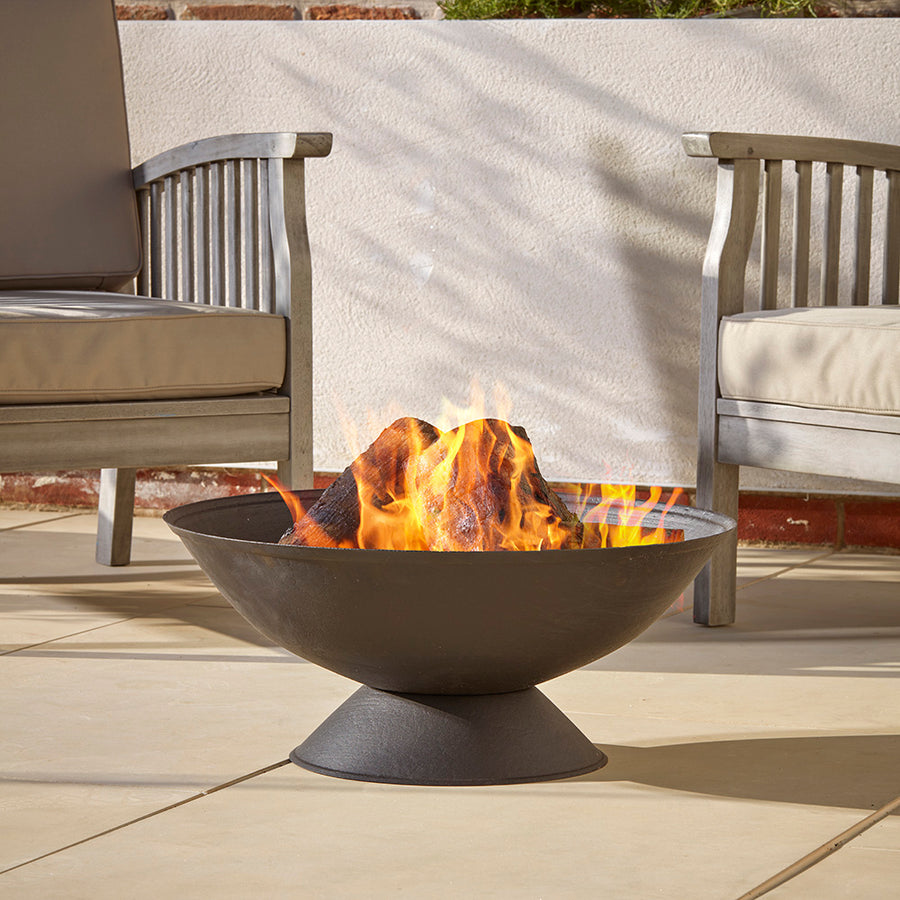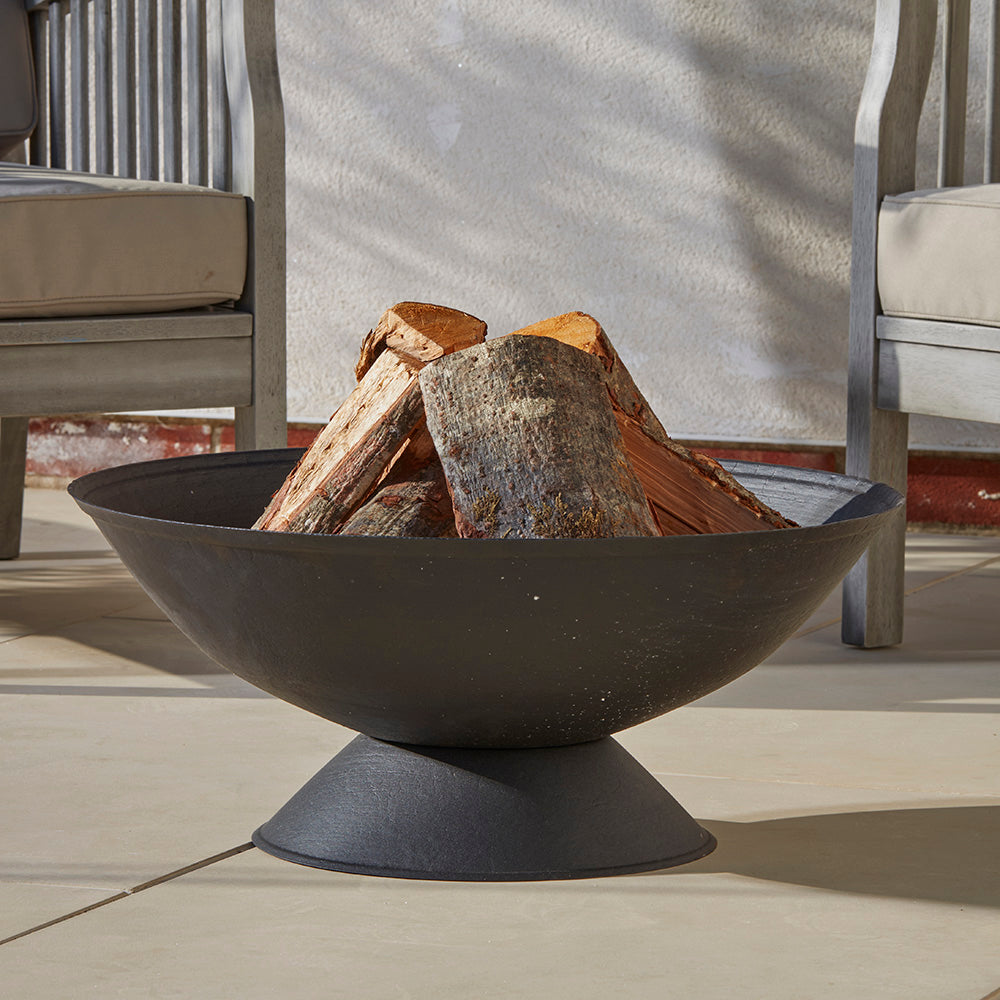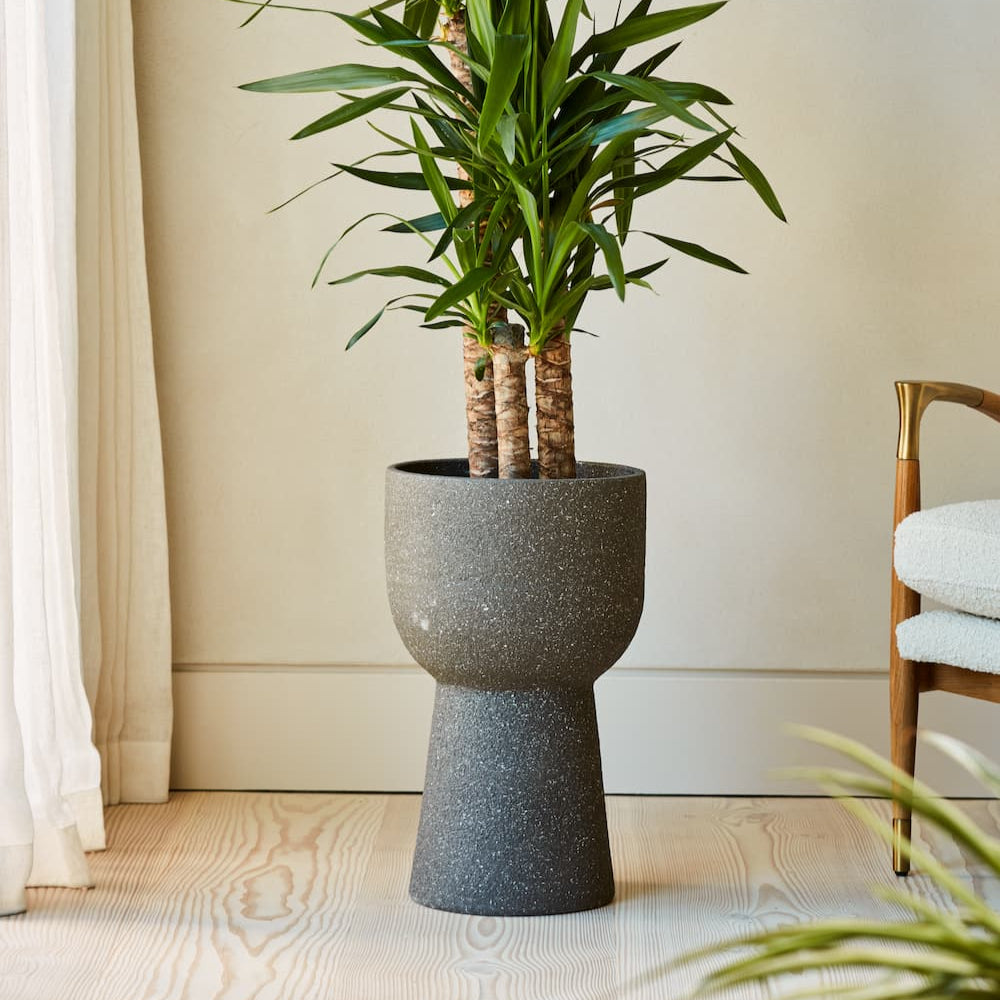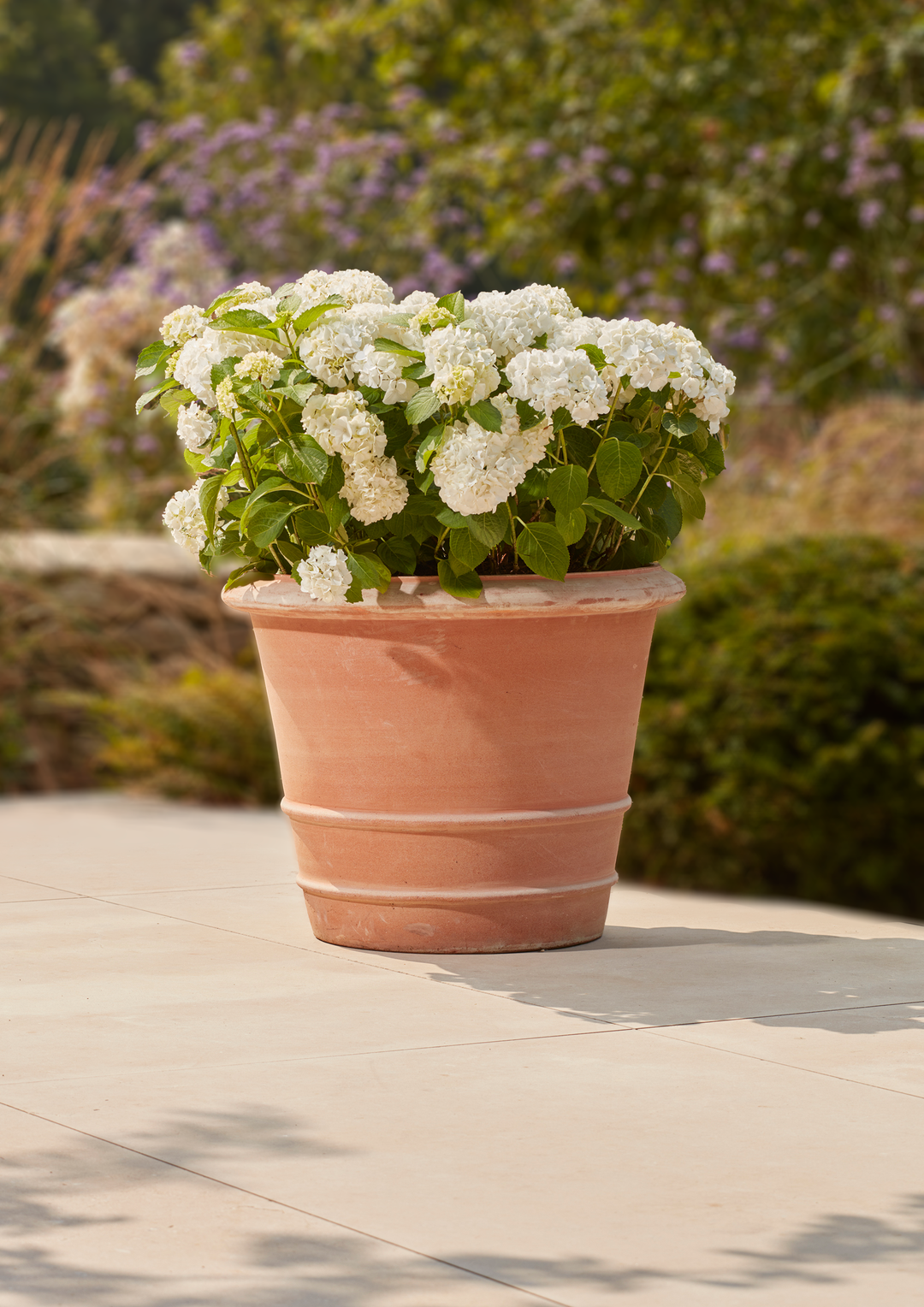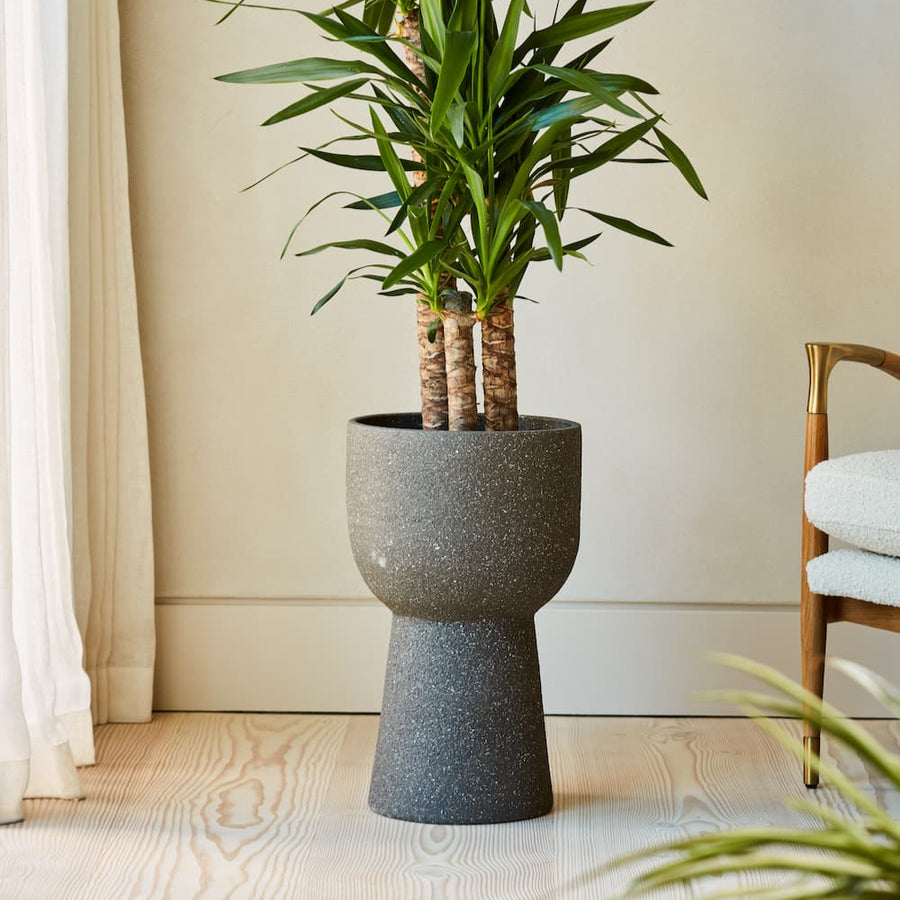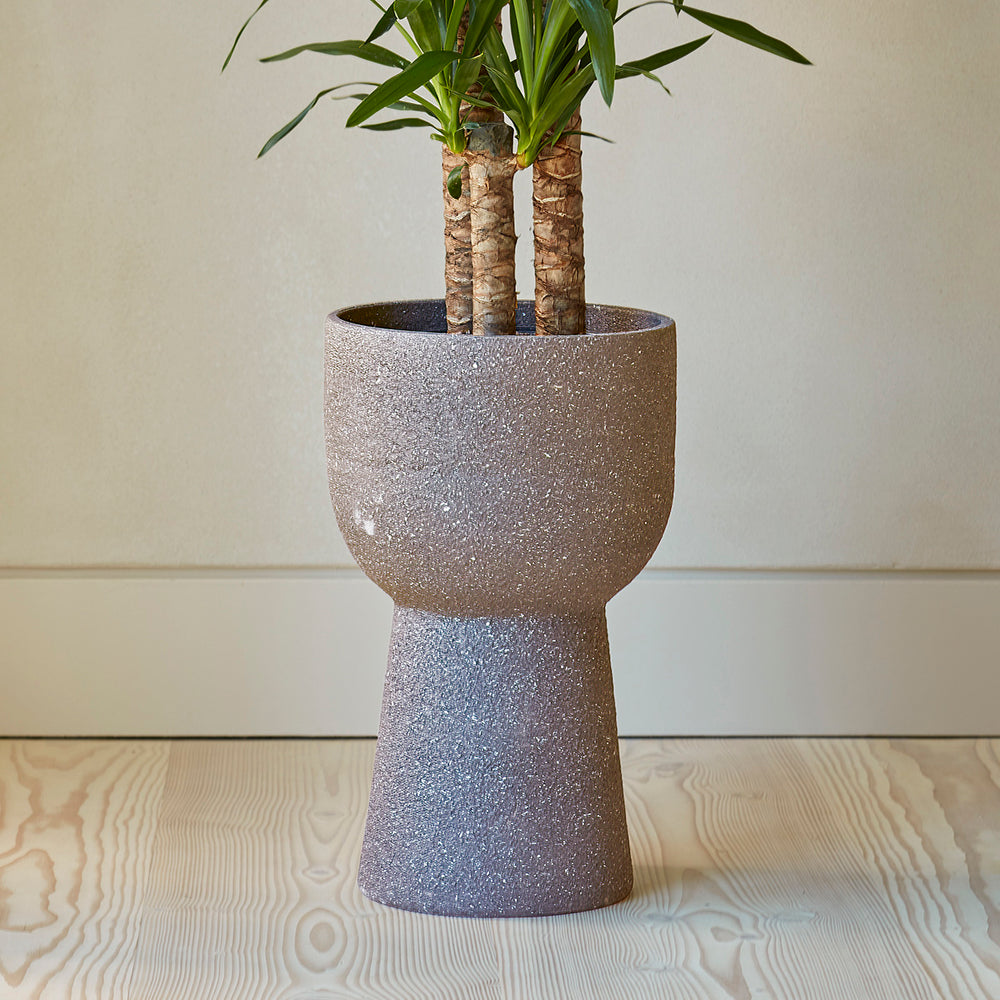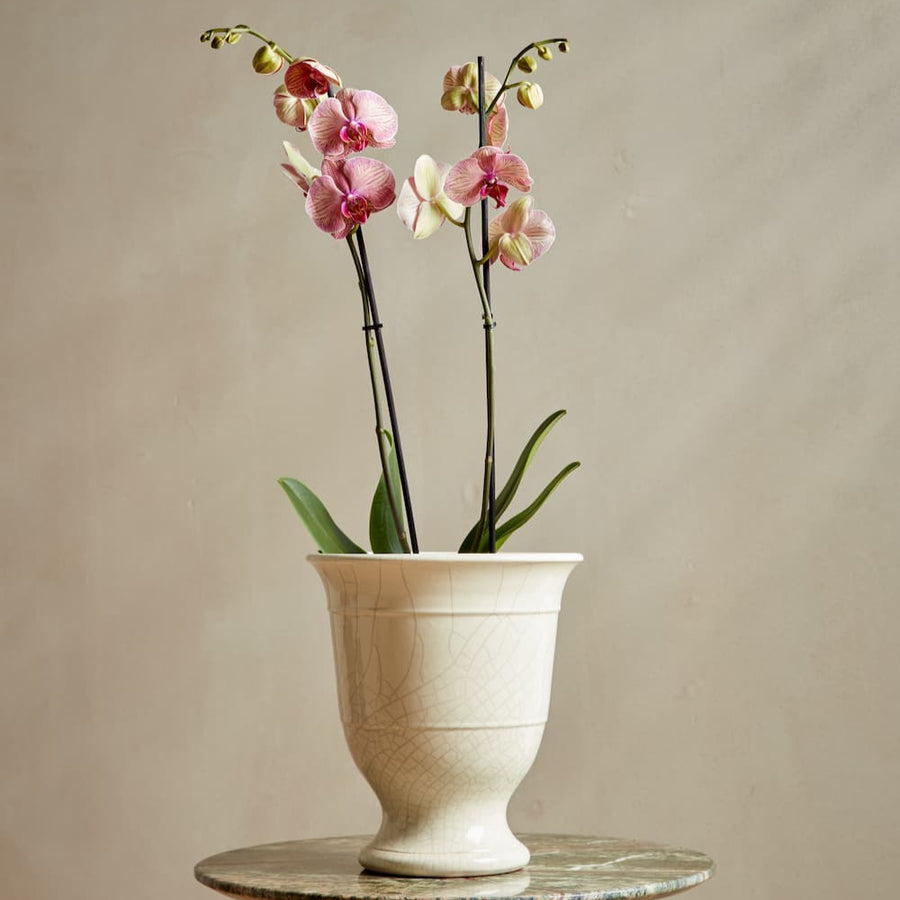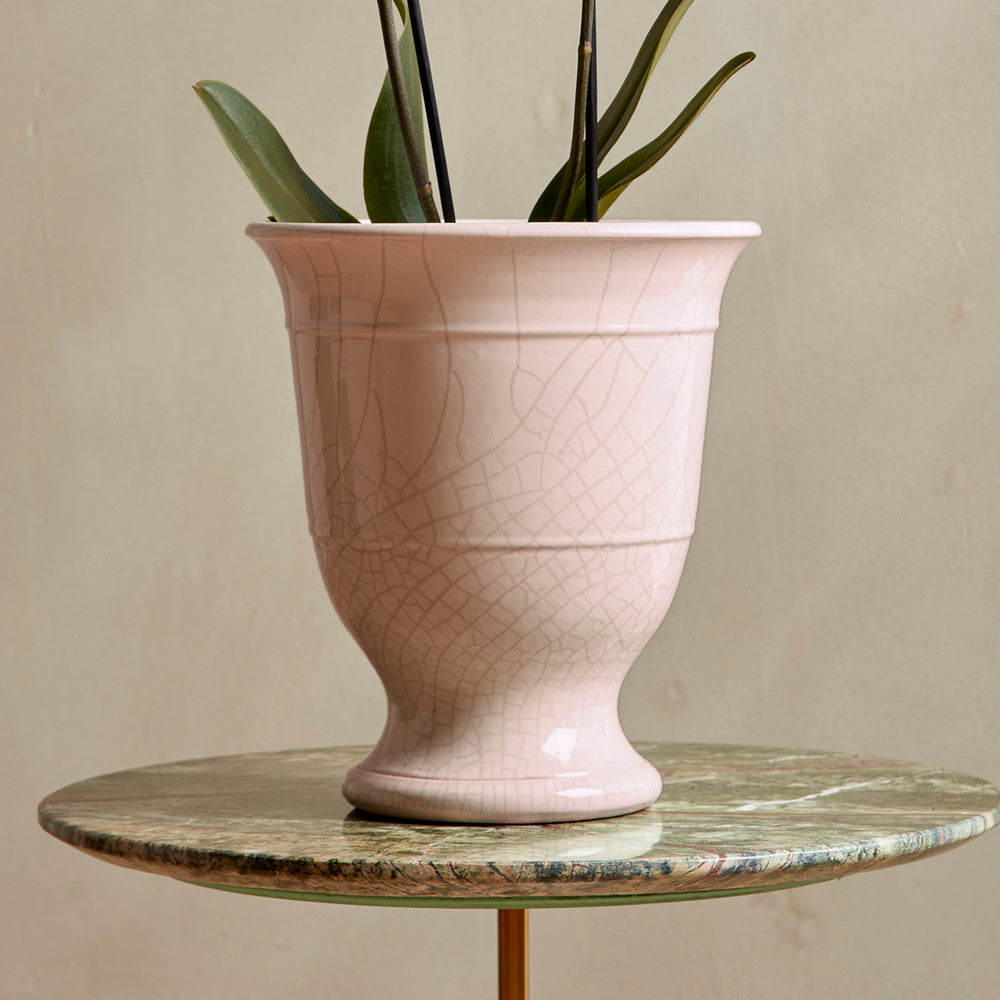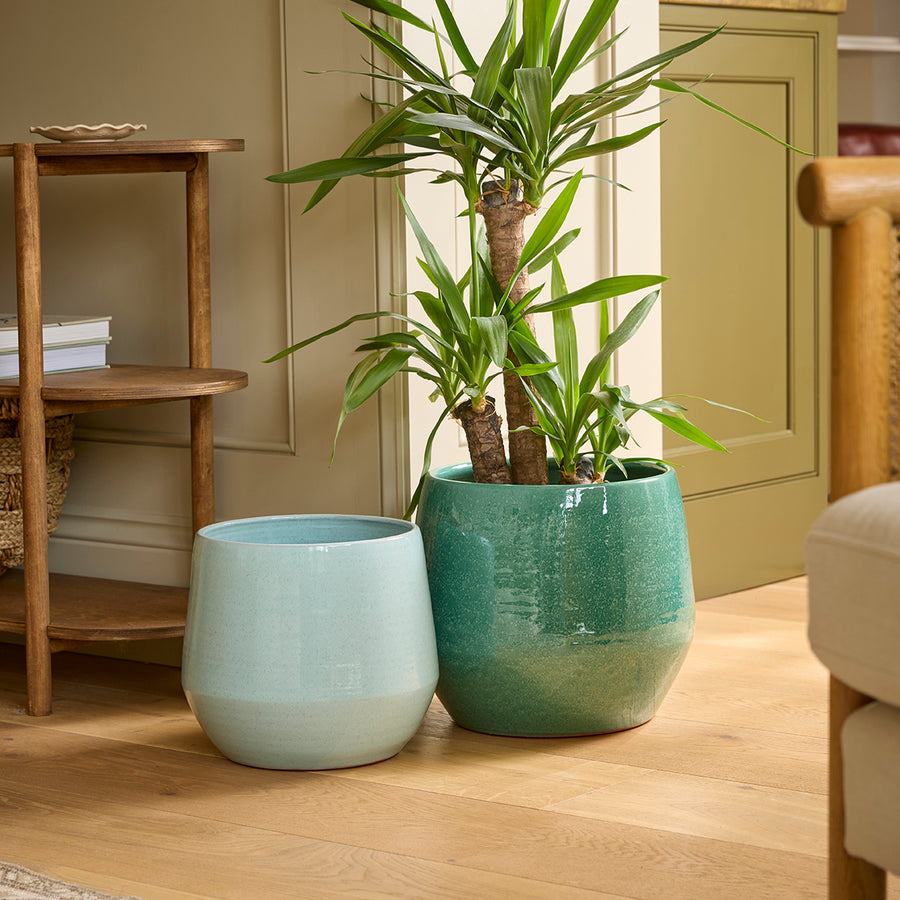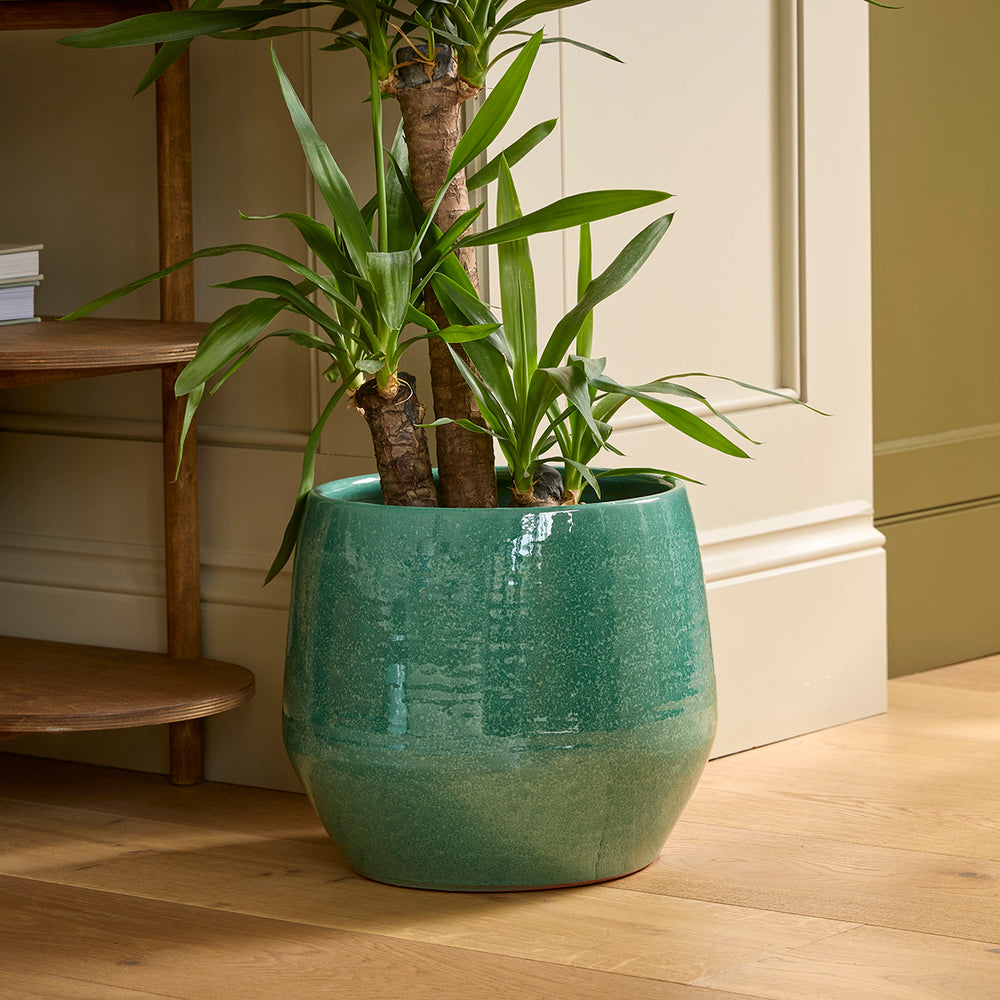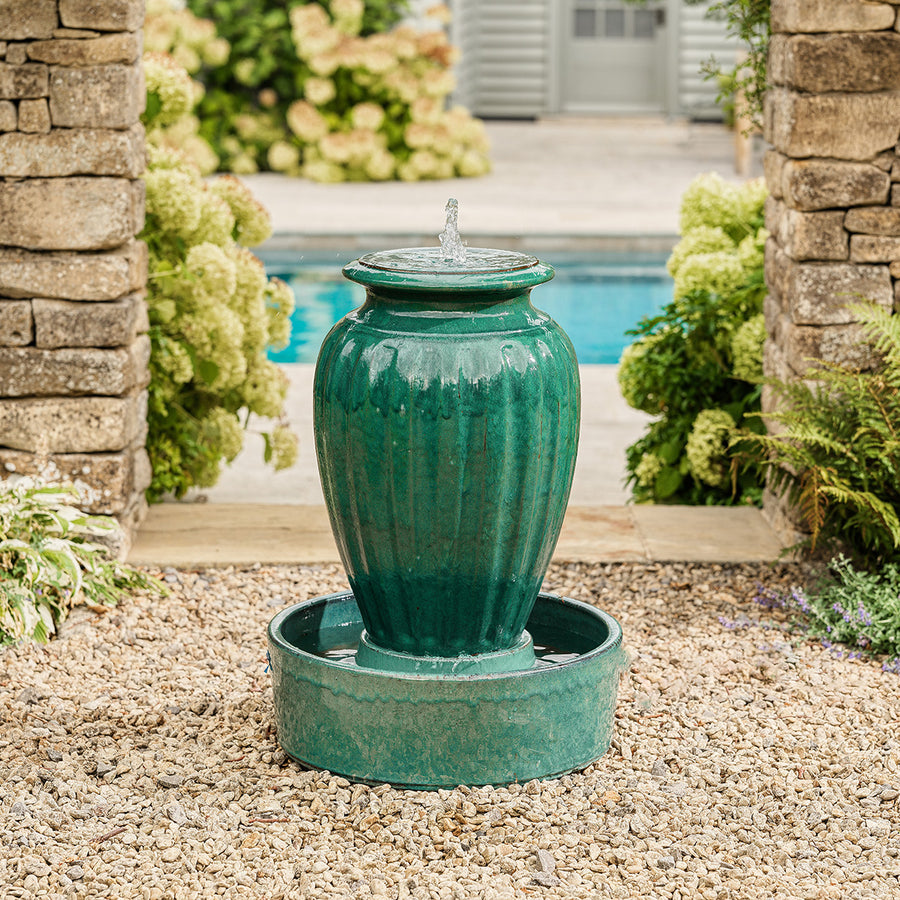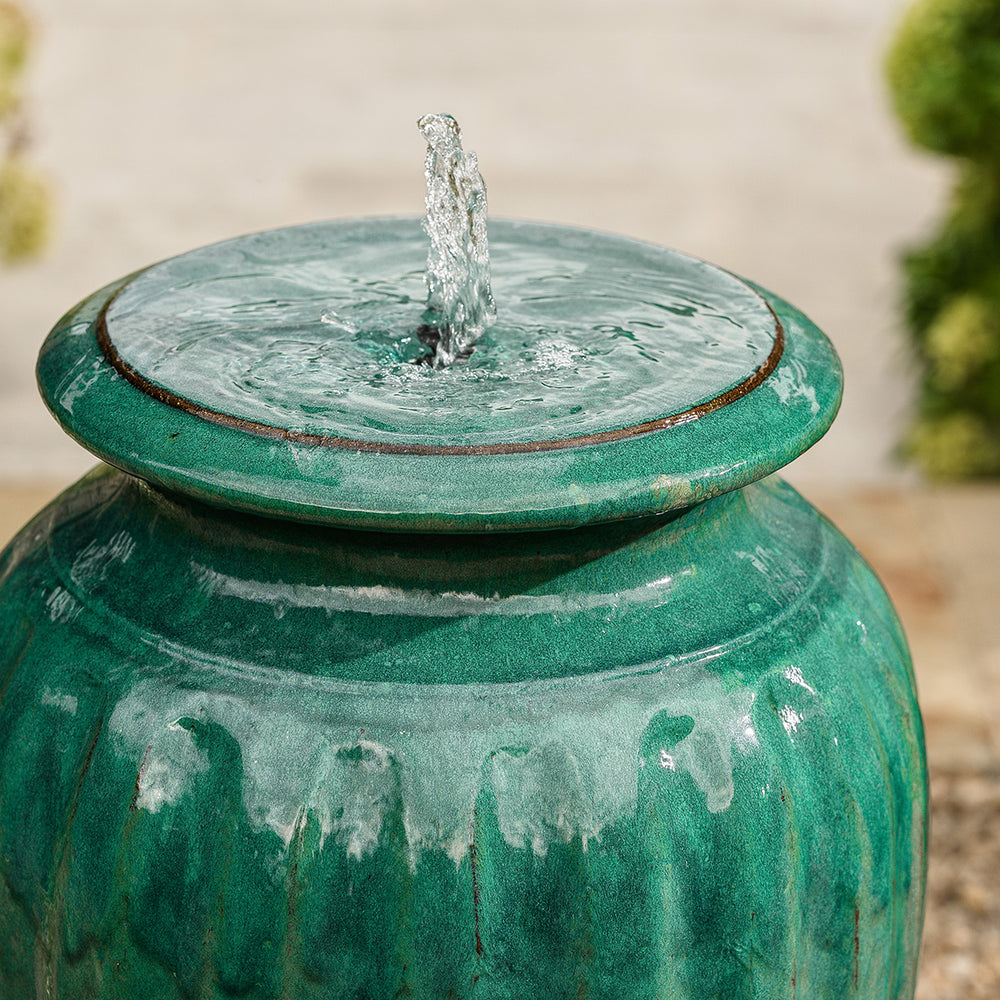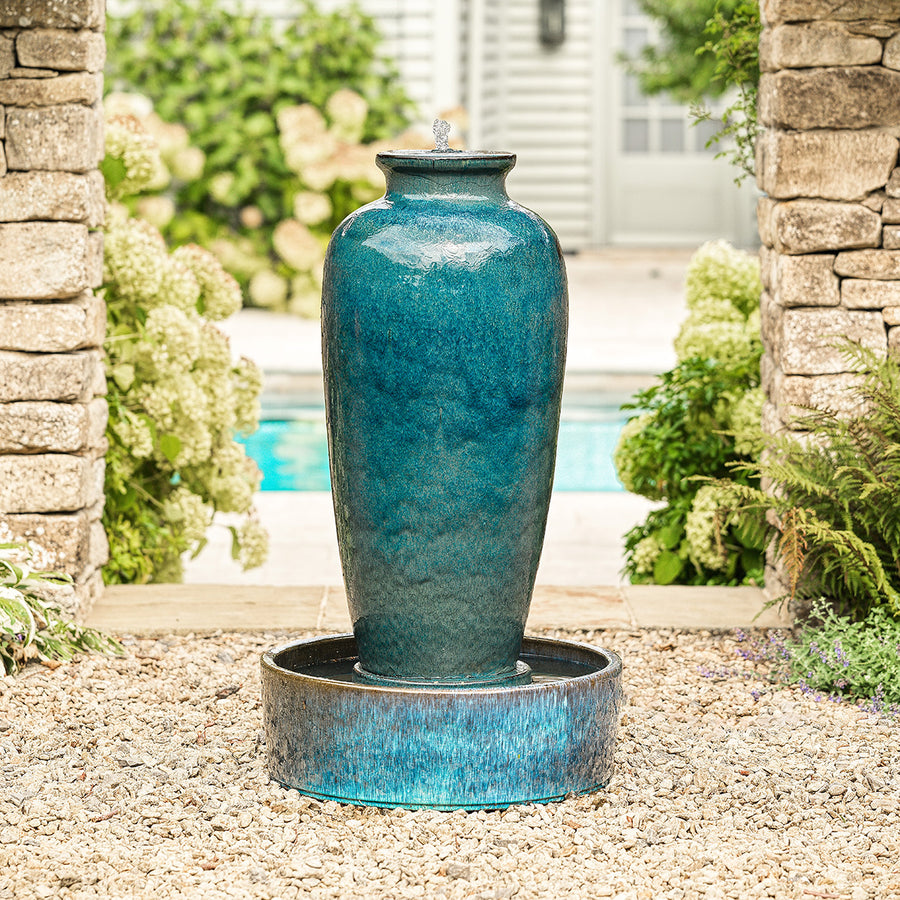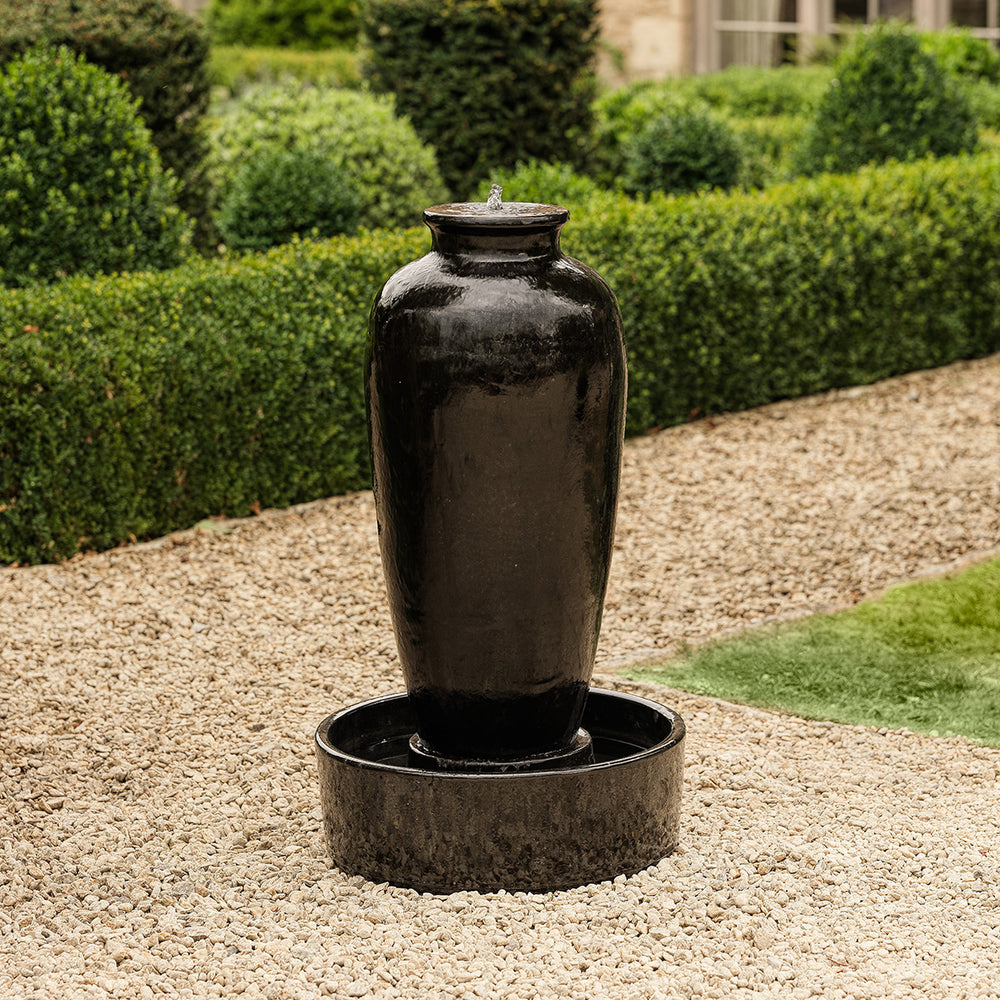In conversation with Gemma Haigh
Award-winning RHS Chelsea Flower Show Designer, Gemma Haigh, is the founder of The Plant Parlour. Gemma is a Surrey-based content creator and consultant, designing plant-filled indoor spaces for clients that bring the outside in.

Favourite Gardenesque Piece.
I went for the Phaya indoor pot. Made in Thailand, it’s a statement piece that I find totally captivating. Its handmade finish is so unique that I could study it for hours and still see something new! I’ve paired my Phaya with a large alocasia regal shield. The plant’s dark, sumptuous leaves create a moody, tropical look that works so well with the shadows and highlights of the Phaya.
What is an interior landscaper?
Interior landscaping sits between the two more traditional disciplines of exterior landscaping and interior design. Interior landscaping is the introduction of plants to your home to create a greener, more organic space, in keeping with your style. Sometimes I work with interior designers and architects to help shape the final look of a space, other times I work with an existing room, providing foliage features that work within its confines. The most important thing is to considering the usability of the space is key to ensuring a client’s happiness, so clear communication of the design concept is also very important.
What has been your career highlight?
Winning silver-gilt at RHS Chelsea Flower Show in 2024. I felt the award recognised the conceptual ideas behind ‘Hope After Humanity’, which showcased a garden of the future, bursting forth from an abandoned London boutique. The exhibit encapsulated ideas about climate change and displayed some incredible tropical houseplants that might one day be native to the UK, if temperatures continue to increase. A lot of work went into making the houseplant studio reflect the design intention, and I was proud of our final efforts as the studio was a piece of living art.
What’s it like displaying at RHS Chelsea?
The build part of RHS Chelsea was much less glamorous than the show! Everyone walks around site in steel-toe capped boots and high vis vests. There’s a lot of mud and the grounds of Chelsea Hospital look very different from the curated perfection that people see on TV. Press Day felt extremely extravagant, though, and we were visited by wildlife presenter, Kate Humble, actress and Woodland Trust ambassador, Charity Wakefield, and Queen guitarist, Brian May, even peered inside our studio to see what was going on!
Which houseplant trends do you see emerging in 2025?
Inviting the outside in is going to be a huge trend for 2025 as many people live in urban spaces without their own garden. With that in mind, I expect we’ll see an increase in sales of common houseplants like snake plants, peace lilies and monstera deliciosas. I think trailing plants will also be huge this year because they give instant impact in homes. I’d recommend different types of pothos for beginners, or epipremnums like devil’s ivy, which is easy to care for.
What’s the biggest mistake people make when introducing plants into their homes?
Overwatering is the number one killer of houseplants. Plants behave differently depending on their environment, so they drink water at different rates. The best way to know if your house plant needs watering is to check the soil first with your finger. If the soil is wet around one inch down, then your plant doesn’t need watering.
What care habits can busy plant parents adopt to keep plants healthy?
Check house plant leaves regularly and wipe any dust from them with a microfibre cloth. This makes sure that plant leaves are receiving maximum light and plant pests like spidermites can’t build up in any great number. It also ensures that you can treat any pest infestations quickly when there’s an outbreak. Plant leaves are also communicators of other problems, such as root rot. Yellow patches or crispy brown spots can be a sign that there’s a problem with your plant’s roots, and you may need to investigate further.
When should you repot your houseplant?
Your houseplants need repotting as they grow larger and should be checked for root growth at least once a year. I repotted my monstera deliciosa in the Leandro plant pot, which has a lovely soft sand muted colour and stylish stone-look finish. This pot allows my monstera deliciosa to do all the talking with its understated look. Plants that have been in the same pot for a long period of time may start to show signs of deficiency in their foliage if they don’t have enough space for their root network. Houseplants also need nutrition to keep them thriving, and much of that comes from the soil their planted in. The most obvious sign that your plant needs repotting is roots visibly escaping through drainage holes at the bottom of your houseplant pot.
What are your tips for repotting?
When you repot your houseplant, increase the size of the plastic nursery pot by 1-2 sizes. Nursery plant pots are usually made of plastic and most plants come in these when bought from garden centres and shops. Choose a nursery plant pot with a little more depth and diameter than the one it’s already potted in – don’t go up in size too much or your plant may go into shock! Larger plants will need sizing up by as much as 3-5cm and you’ll need a decorative cover pot. Gardenseque is my go-to for beautifully made, bigger pots, as they’re excellent quality and make a statement in your space.
What method do you use to repot houseplants?
1. Find the correct size nursery pot for your houseplant.
2. Test it inside a cover pot to check it fits neatly. The rim of your nursery pot should sit just below the rim of your decorative cover pot for an aesthetic finish.
3. Remove your houseplant from its original nursery pot. Unless there’s an issue with the roots, don’t disturb them too much, just fondle the bottom to loosen them ever-so-slightly.
4. Place enough houseplant soil in the bottom of your new nursery pot to cover the base.
5. Pop your plant into the pot, holding it in place whilst you fill the areas around it with soil. Make sure you compress the soil a little with your fingers, to ensure the plant is held firmly in place.
6. Sprinkle some soil at the top of the pot and press down again to cover any roots left showing.
7. Place your pot inside its new decorative cover pot.
8. Give your plant some water as it will be thirsty. Ensure that you don’t overwater by emptying any water that’s caught in the decorative pot about 1 hour later.
Watch the video on YouTube here!


